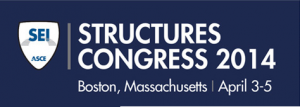Water brings life to humans throughout the world. Many of us forget how lucky we are to have clean, running water in our homes and communities. Throughout the world, there are many people who lack clean drinking water, and sanitation solutions. However, engineers aren’t going to sit around and let that happen for long. These are some of the most interesting clean water and sanitation projects going on around the world.
Engineering Clean Water
 Arizona State University engineer students created a new organization called, “SafeSIPP“. The business was created to solve three main issues facing developing nations: “transportation, purification, and safe storage of drinking water”. These bright students have created a three stage purification system and put it into a barrel. The purification is initiated when the barrel rolls. The barrel is pushed with a handle attached to it (see photo from SafeSIPP.) Everything about this project will dramatically improve life for people in developing nations. Not only will their water be safe to drink, but it will also be much easier to transport, and there is much water that can actually be transported and stored. To learn more, go to safesipp.org.
Arizona State University engineer students created a new organization called, “SafeSIPP“. The business was created to solve three main issues facing developing nations: “transportation, purification, and safe storage of drinking water”. These bright students have created a three stage purification system and put it into a barrel. The purification is initiated when the barrel rolls. The barrel is pushed with a handle attached to it (see photo from SafeSIPP.) Everything about this project will dramatically improve life for people in developing nations. Not only will their water be safe to drink, but it will also be much easier to transport, and there is much water that can actually be transported and stored. To learn more, go to safesipp.org.
Safe Sanitation
A team lead by University of Colorado professor of environmental engineering, Karl Linden, have developed a solar-thermal toilet in response to the “Reinvent the Toilet” challenge from the Bill & Melinda Gates Foundation. The waterless toilet has the capability of heating human waste to sterilize it, and then create biochar. You can then use the biochar, a kind of charcoal, to solve a variety of other issues. The biochar can be used by farmers to mix into the soil, and it can also be used to burn for energy. Learn more about the challenge hosted in India from Techcrunch.
Citations:
University of Colorado at Boulder. (2014, March 13). Innovative solar-powered toilet ready for India unveiling. ScienceDaily. Retrieved March 23, 2014 from www.sciencedaily.com/releases/2014/03/140313164513.htm

 You may be surprised to learn that there are more ways to connect with engineering recruiters than just online job boards.
You may be surprised to learn that there are more ways to connect with engineering recruiters than just online job boards. 






